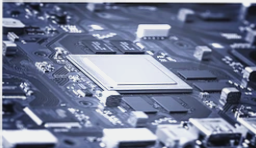2. Developing a PCBA test plan involves establishing a comprehensive set of content and methods tailored for the debugging of a specific type of electronic product, ensuring that the testing proceeds smoothly and yields positive results. The plan should encompass the following fundamental elements:
3. a. The test content must be explicitly formulated in accordance with standards set by the country or organization, as well as the grading specifications of the product being tested.
4. b. Selection of test equipment, which includes various measuring instruments, tools, and specialized testing apparatus.

c. Testing methods and detailed procedures.
d. Testing conditions and associated precautions.
e. Safety operating procedures during testing.
f. Required data and record forms for testing.
g. Estimated man-hours needed for the test.
h. Signatures of the test supervisor and handover documentation.
All the aforementioned elements should be incorporated into the relevant process documents and tables as thoroughly as possible.
**Fundamental Principles for Developing a PCBA Test Plan**
For various PCBA products, the test plan will vary, yet the underlying principles and methodologies share commonalities.
a. Based on product specifications, classifications, and key trends, identify the test items and principal performance indicators.
b. With a solid grasp of the product’s working principles and performance metrics, emphasize understanding the roles, parameters, and acceptable ranges of critical components that influence product performance. This approach will not only sharpen the test focus but also enhance testing efficiency.
c. Take into account the adjustments of individual components and their inter-coordination, especially the synergy between parts, as this often impacts the overall performance of the device.
d. When testing the PCBA prototype, account for mass production conditions and requirements, ensuring the consistency of performance indicators within specified limits, as deviations may compromise product qualification and reliability.
e. Consider the available equipment and conditions, ensuring that debugging methods and steps are practical and safe for operators.
f. Aim to leverage advanced technologies to boost production efficiency and product quality.
g. Throughout the debugging process, address any irregular occurrences promptly, analyze and document them, and implement new strategies for enhancement, thus contributing valuable insights and data for future debugging efforts.
h. For the PCBA test plan formulation, the more detailed the debugging content, the better, ensuring strong operability. Testing conditions should be articulated clearly, debugging steps organized systematically, and test data tabulated to facilitate observation, understanding, and comprehensive analysis. Safety operation regulations must be explicit and detailed, including the selection and configuration of debugging instruments.




